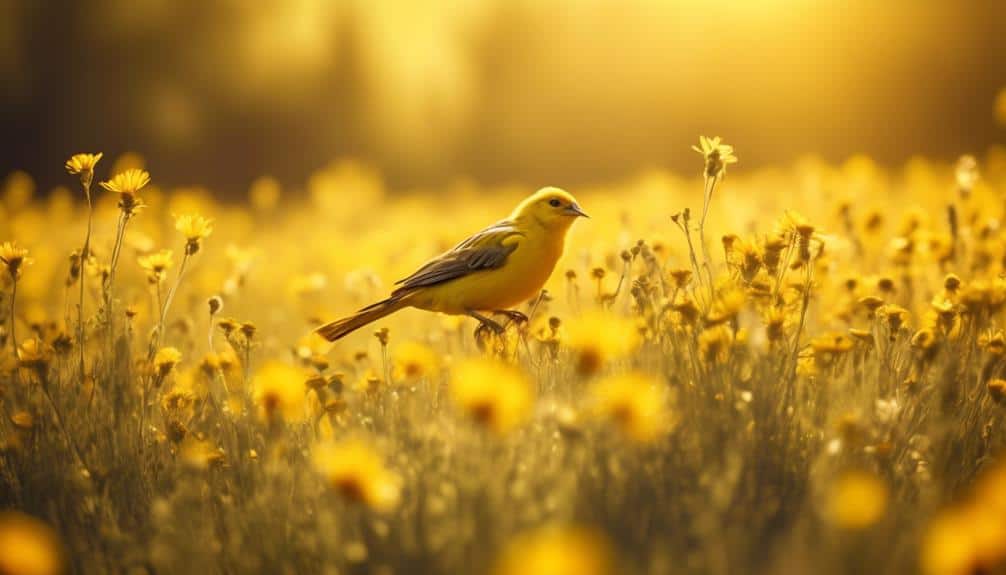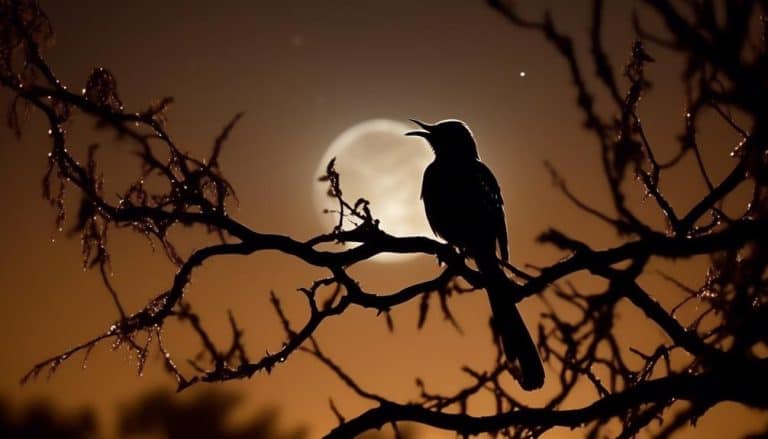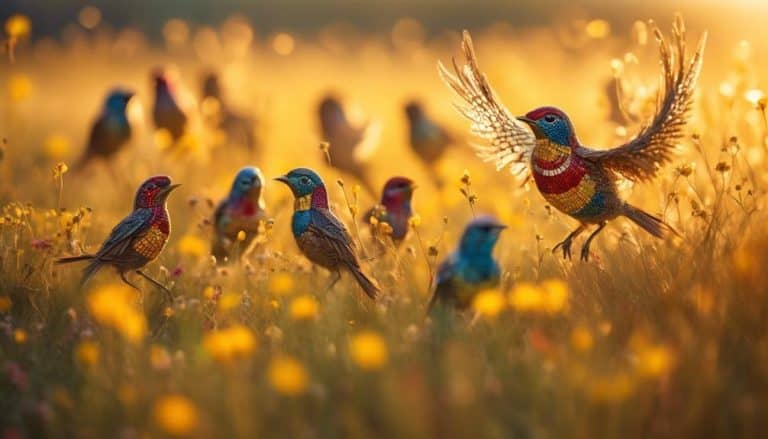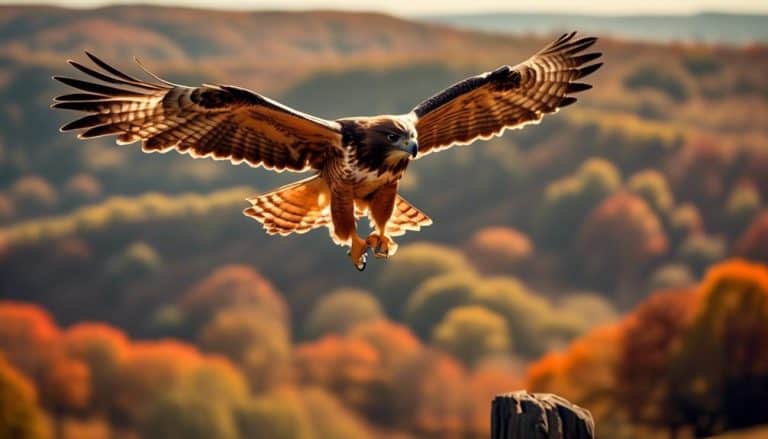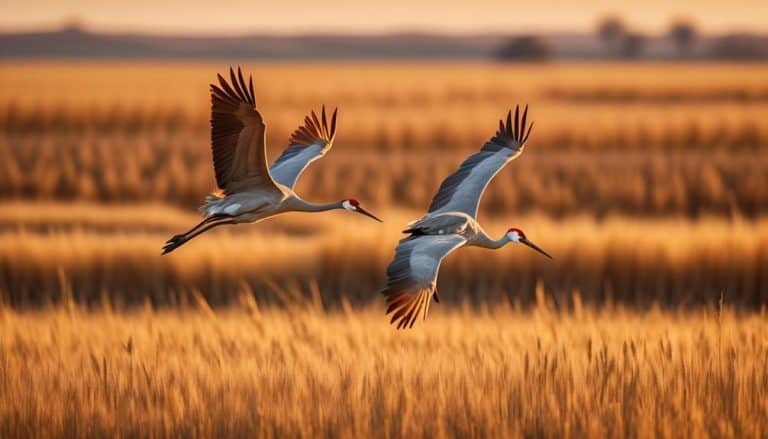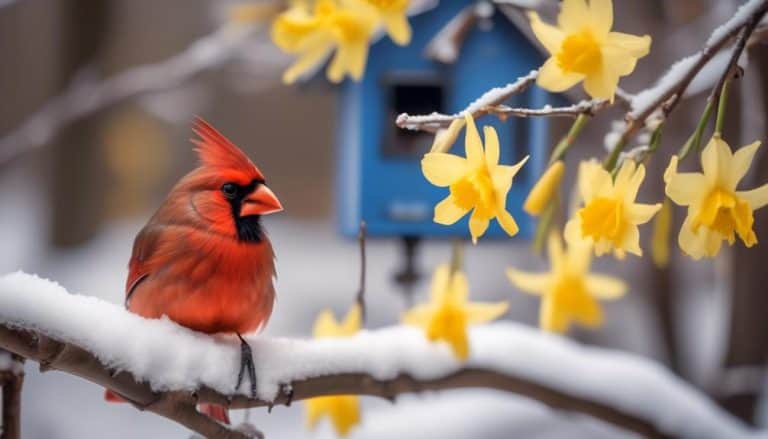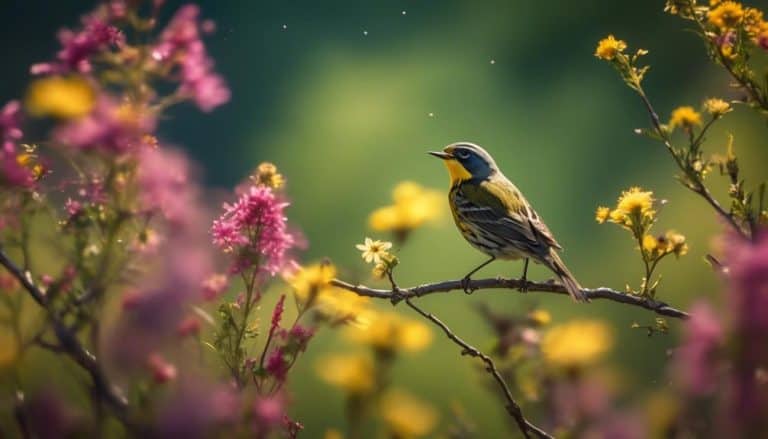As I stand in the serene Oregon wilderness, a vibrant burst of color catches my eye. It is the unmistakable sight of a yellow bird, its feathers radiating warmth against the verdant backdrop.
These avian wonders have long fascinated birdwatchers and nature enthusiasts alike, drawing us into their world of beauty and grace. But there is so much more to discover about these yellow birds in Oregon.
From their diverse species to their unique behaviors, habitats, and migration patterns, there is a wealth of knowledge waiting to be uncovered.
So, join me on this journey as we unravel the secrets of these captivating creatures and explore the best locations to catch a glimpse of them in their natural habitat.
Types of Yellow Birds in Oregon
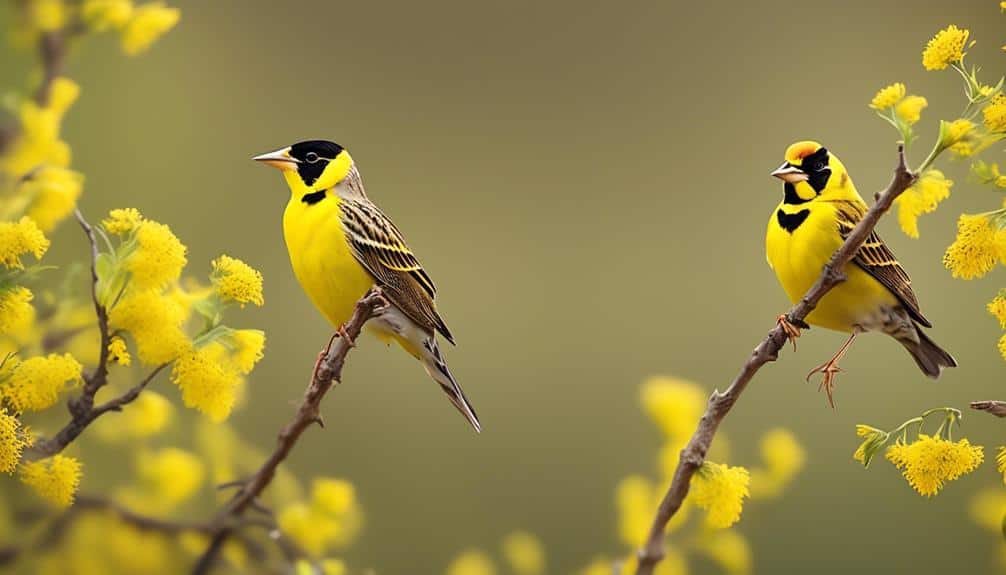
In my observation of the avian species in Oregon, I've identified several distinct types of yellow birds that inhabit this region. When it comes to yellow bird species identification, one can encounter the American Goldfinch, the Yellow Warbler, and the Western Tanager.
The American Goldfinch (Spinus tristis) is a small, vibrant yellow bird with black wings and a distinctive black cap. It's commonly seen in open fields and meadows, feeding on seeds from various plants such as thistles and sunflowers.
The Yellow Warbler (Setophaga petechia) is another yellow bird species found in Oregon. It has a bright yellow plumage with reddish streaks on its breast. These warblers are often found in shrubby areas near water sources, where they feed on insects and occasionally small fruits. Their high-pitched song can be heard throughout the summer months.
Lastly, the Western Tanager (Piranga ludoviciana) is a striking yellow bird with a black back and wings, and a bright red head. They can be seen in coniferous forests, foraging for insects and fruits. Their vibrant colors make them a treat to spot in the wilderness.
Understanding the yellow bird feeding habits is crucial for their conservation and protection. By recognizing these distinct types of yellow birds in Oregon and studying their feeding behaviors, we can gain valuable insights into their ecological roles and contribute to their preservation.
Characteristics and Behaviors of Yellow Birds
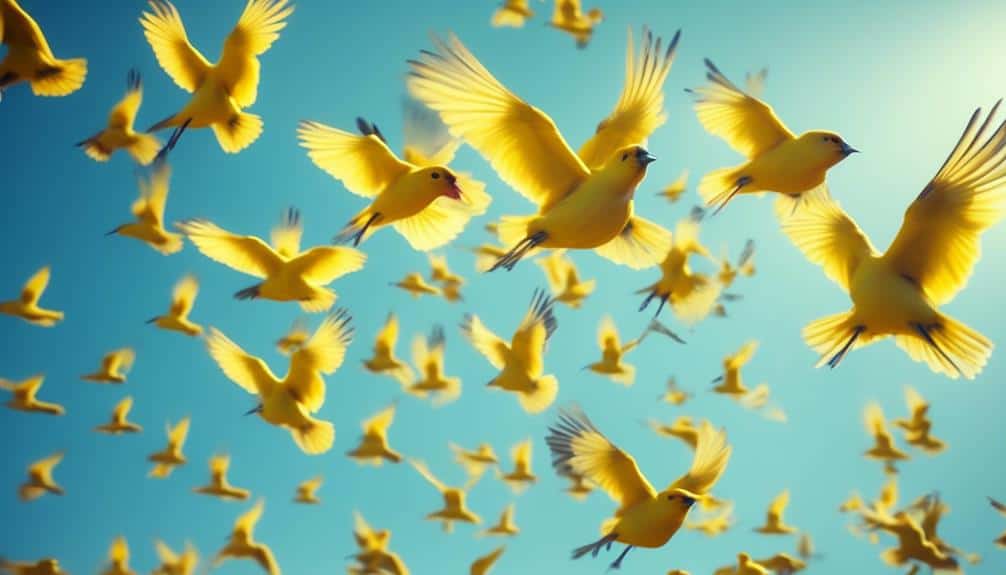
Yellow birds, such as the American Goldfinch, the Yellow Warbler, and the Western Tanager, exhibit distinctive characteristics and behaviors that contribute to their unique ecological roles in Oregon.
These yellow birds are known for their vibrant plumage, which helps them attract mates during the breeding season. The males of these species often have brighter yellow feathers compared to the females, as they use their coloration to establish dominance and defend their territories.
In terms of diet, yellow birds primarily feed on seeds, insects, and fruits. The American Goldfinch, for example, has a specialized beak that allows it to extract seeds from various plants such as thistles and sunflowers. During the breeding season, these birds also include insects in their diet to provide essential nutrients for their young.
Yellow birds are known for their melodious songs, which they use to communicate with each other and attract mates. The Yellow Warbler, in particular, has a sweet, high-pitched song that can be heard throughout the forests and wetlands of Oregon. These birds are often seen flitting between tree branches and shrubs, searching for insects and singing their distinctive songs.
Habitats and Migration Patterns of Yellow Birds
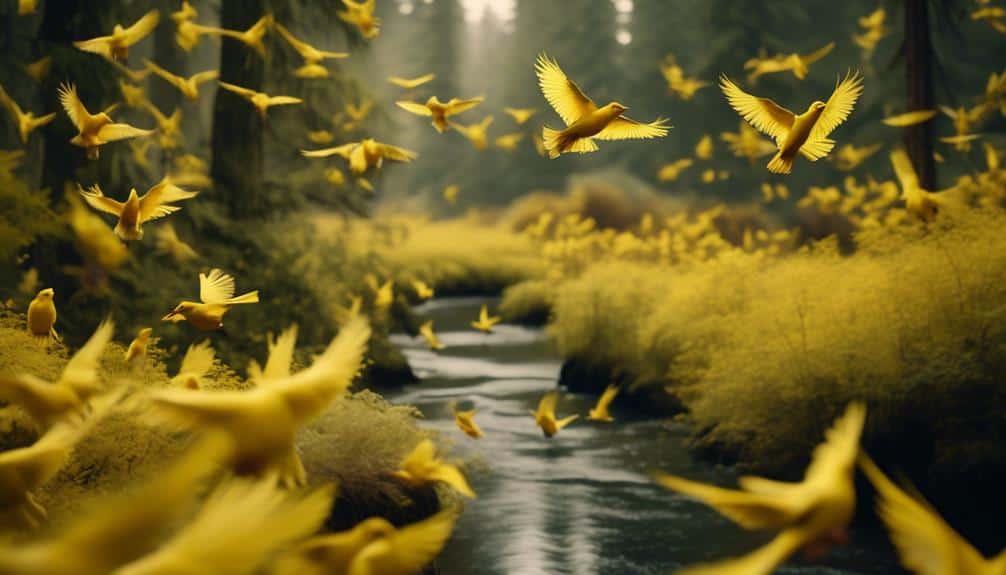
One can observe the diverse habitats and migration patterns of yellow birds found in Oregon. Yellow birds in Oregon are known to inhabit a variety of ecosystems, including forests, grasslands, wetlands, and coastal areas. These habitats provide them with ample food sources, nesting sites, and protection from predators.
The breeding season of yellow birds in Oregon typically begins in late spring and lasts throughout the summer. During this time, the males engage in elaborate displays to attract females and establish their territories. Nests are built in trees or shrubs, and the females lay their eggs, usually numbering between three to five. Both parents take turns incubating the eggs and caring for the hatchlings.
Migration is an important aspect of yellow bird behavior in Oregon. Many yellow birds found in the state migrate south during the winter months to escape the harsh weather conditions. They travel in flocks, utilizing well-established migration routes to reach their wintering grounds. This long-distance journey allows them to access more favorable feeding grounds and avoid competition for resources.
However, the population of yellow birds in Oregon faces several threats. Loss of habitat due to urbanization and deforestation disrupts their nesting and foraging sites. Pesticide use in agricultural areas can also have detrimental effects on their health and reproductive success. Climate change further poses challenges, as it alters the timing of migration and availability of food resources.
Conservation efforts are crucial to preserving the habitats and ensuring the survival of these beautiful yellow birds in Oregon.
Best Locations for Birdwatching Yellow Birds in Oregon
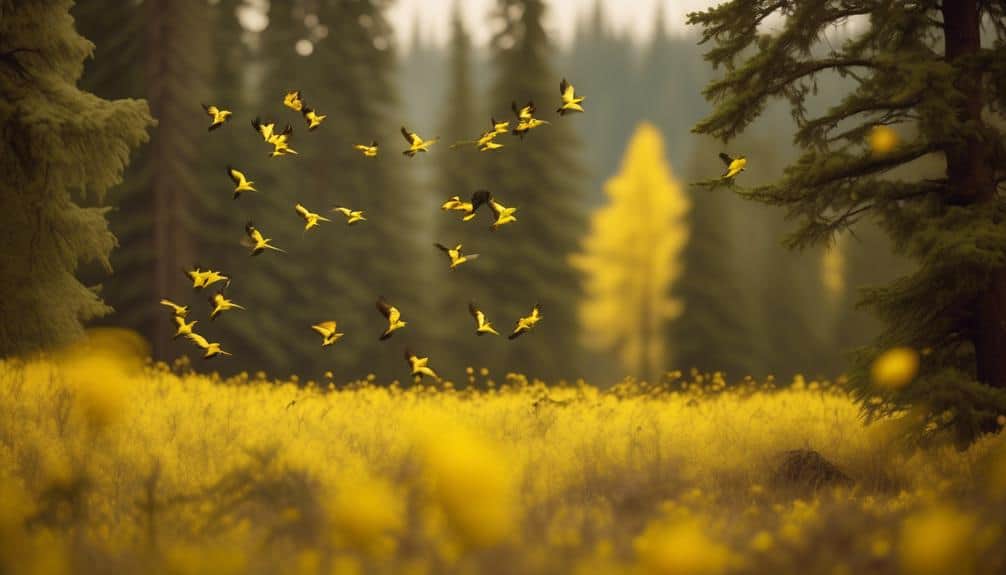
The prime birdwatching locations for observing yellow birds in Oregon include a diverse range of habitats such as forests, wetlands, and coastal areas. These popular birdwatching spots offer ample opportunities to observe and photograph various species of yellow birds in their natural habitats.
One of the best locations for birdwatching yellow birds is the Malheur National Wildlife Refuge. This vast wetland area attracts a wide variety of bird species, including several yellow birds such as the American Goldfinch and the Yellow Warbler. The refuge provides excellent photography opportunities, especially during the breeding season when these birds are actively displaying their vibrant yellow plumage.
Another popular spot is the Columbia River Gorge. This scenic area is home to dense forests and diverse ecosystems, making it an ideal habitat for yellow birds like the Western Tanager and the Yellow-rumped Warbler. The gorge offers breathtaking views and ample opportunities to capture stunning photographs of these colorful birds against the backdrop of majestic waterfalls and towering cliffs.
For coastal birdwatching enthusiasts, the Oregon Coast is a must-visit destination. The coastal areas provide a unique habitat for yellow birds such as the Wilson's Warbler and the Yellow-bellied Flycatcher. These birds can often be spotted foraging along the shoreline or perched on the coastal vegetation. Photographers can take advantage of the stunning coastal landscapes to capture breathtaking images of these vibrant yellow birds in their natural environment.
When photographing yellow birds, it's important to use a telephoto lens to get close-up shots without disturbing the birds. Patience is key, as these birds can be elusive and may require waiting for the perfect moment to capture their unique behaviors or interactions. In addition, paying attention to lighting conditions and using a fast shutter speed can help freeze the birds' movements and ensure sharp images.
Conservation Efforts for Yellow Birds in Oregon
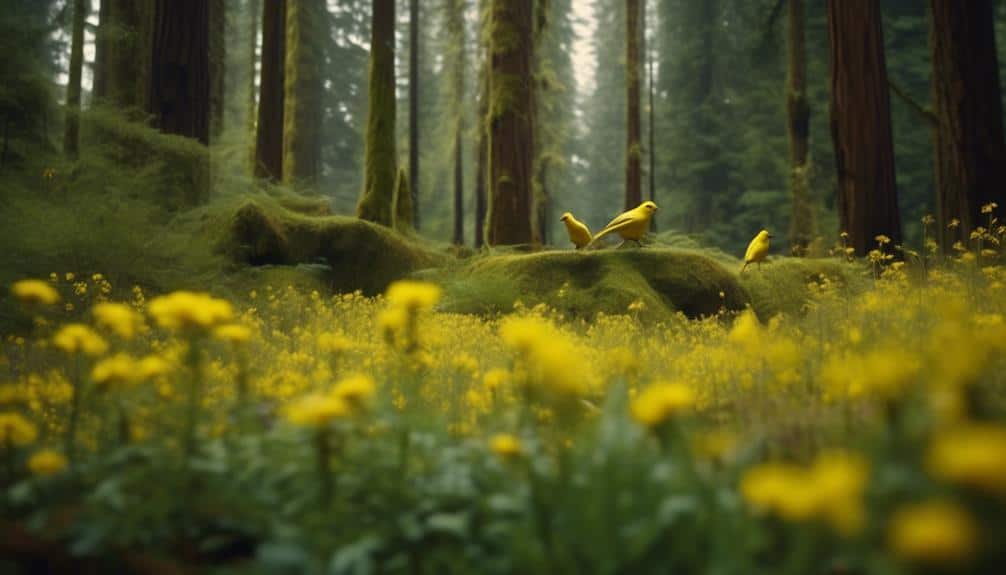
Efforts to conserve the populations of yellow birds in Oregon have been focused on protecting and restoring their habitats, as well as implementing conservation strategies to address specific threats they face. The decline in yellow bird populations in Oregon has raised concerns among wildlife conservation organizations and researchers. Climate change, in particular, has been identified as a significant factor contributing to the decline of these birds.
To combat this issue, several conservation efforts are currently underway:
- Habitat Restoration: Restoration projects aim to create and maintain suitable habitats for yellow birds by restoring native vegetation and removing invasive species. These efforts help provide food sources, nesting sites, and shelter for the birds.
- Education and Awareness: Conservation organizations are actively involved in educating the public about the importance of yellow birds and their habitats. They conduct workshops, seminars, and awareness campaigns to engage communities and inspire action.
- Research and Monitoring: Scientists and researchers are conducting studies to better understand the impact of climate change on yellow birds. They monitor population trends, migration patterns, and breeding behaviors to gather valuable data for conservation planning.
- Policy Advocacy: Conservation groups work with policymakers to advocate for policies that protect yellow bird habitats and address the broader issues of climate change. They engage in lobbying efforts, provide scientific evidence, and collaborate with government agencies to ensure the long-term survival of these birds.
These conservation efforts are crucial for the preservation of yellow bird populations in Oregon. By addressing the challenges posed by climate change and protecting their habitats, we can hope to reverse the decline and ensure the survival of these beautiful birds.
Frequently Asked Questions
What Is the Average Lifespan of Yellow Birds in Oregon?
The average lifespan of yellow birds varies depending on factors such as habitat, predation, and disease. Understanding yellow bird migration patterns and diet preferences in Oregon can provide insights into their overall health and longevity.
How Do Yellow Birds in Oregon Communicate With Each Other?
Yellow birds in Oregon communicate through a combination of vocalizations and body language. Their plumage also plays a role in their communication, as it can convey information about their age, health, and social status.
Do Yellow Birds in Oregon Mate for Life?
Yellow birds in Oregon do not mate for life. They have specific yellow bird migration patterns and yellow bird nesting habits. These behaviors allow them to find new partners each breeding season.
Are There Any Predators That Specifically Target Yellow Birds in Oregon?
Yes, there are predators that specifically target yellow birds in Oregon. Their presence creates a delicate predator-prey dynamic, impacting the population. It's a harsh reality, but it's crucial to understand the intricate balance of nature.
What Is the Population Trend of Yellow Birds in Oregon Over the Past Decade?
The population trend of yellow birds in Oregon over the past decade has been marked by fluctuations. Factors such as habitat loss have played a role in affecting the numbers of these birds.
Conclusion
After exploring the diverse world of yellow birds in Oregon, it's fascinating to note that over 20 different species of these vibrant creatures can be found in the state.
Among them, the Western Tanager stands out with its striking yellow plumage and black wings, creating a captivating visual contrast.
These birds can be observed in various habitats across Oregon, showcasing their unique behaviors and migration patterns.
It's crucial for us to continue our conservation efforts to protect these stunning yellow birds and their habitats.

